Why Did the Children Cross the Road?
Background
The City of New York, responding to the Court’s decision in McCollum v. Board of Education (1948), created a “released time” program largely identical to that struck down in Champaign, Illinois. The only substantial difference was that students whose families gave permission actually left school grounds for religious instruction during the school day.
Students not participating were required to remain in school. School officials communicated with religious instructors to confirm the attendance of those released, and the school handled the discipline of anyone using the occasion to skip out altogether. In short, the schools were certainly facilitating religious instruction, even if they weren’t actually providing it on site.
Several parents objected to the program as a violation of the Establishment Clause. (There was also a legal argument made that it violated “free exercise,” but this was quickly dismissed by the courts.) Schools were clearly promoting religious instruction, they argued, and in only of a handful of favored varieties. Staff exerted pressure on students to conform and gave tacit approval to the verbal and corporeal abuse they suffered from their more devout peers.
Changing Circumstances
The physical location of “released time” religious instruction wasn’t the only contextual shift since McCollum. The United States was in the early years of McCarthyism and had just entered the Korean War. Patriotic Americans had begun to suspect Communist infiltration in their midst, already at work at all levels of government and sowing the seeds of chaos and godlessness. While the social and political ideologies of Marxism and the continued presence of people with funny last names threatened the nation with internal decay, the Soviets began testing their own atom bombs in hopes of inflicting some external destruction as well.
The celebrations of freedom and democracy which lingered after World War II were rapidly fading in favor of fear, suspicion, and a sense of persecuted minority status among the straight white Protestants who still made up nearly 90% of the nation’s population (and virtually 100% of its leadership). Historically, it seems, nothing threatens entrenched demographic power like a handful of outliers thinking their lives matter as well.
Despite these cultural shifts, had this been the same Supreme Court which decided McCollum four years earlier, it’s impossible to know how they’d have adapted to the shift from “on campus” to “up the street a ways.” The Court, however, had lost two members in the interval – Justice Wiley Rutledge and Justice Frank Murphy, both FDR appointees who’d been reliable defenders of individual liberties (by the standards of the times). They were replaced by Truman appointees Justice Sherman Minton and Justice Tom C. Clark respectively, both of whom were virulently anti-Communist and pro-God-as-cultural-unifier.
The ideology of our Justices matters. While most make every effort to remain faithful to the law and the Constitution on which it is built, the glasses one wears often determine the color and clarity of everything one sees.
The Decision
In a 6 – 3 decision, the Court determined that the logistical change from on-campus to off-campus religious instruction during the school day was enough to satisfy the limitations imposed by the First Amendment (and applied to the states via the Fourteenth). Justice William O. Douglas wrote the Majority Opinion, in which he insisted there’d been no evidence to suggest students felt coerced or otherwise pressured to attend religion classes. If there had been, by golly, the Court would definitely not be OK with that.
Absent such coercion, however, it would be a mistake for the Court to too easily find “establishment” lurking everywhere or to treat any recognition of faith as a threat to the American way of life:
The First Amendment… does not say that, in every and all respects there shall be a separation of Church and State. Rather, it studiously defines the manner, the specific ways, in which there shall be no concert or union or dependency one on the other… Otherwise the state and religion would be aliens to each other — hostile, suspicious, and even unfriendly. Churches could not be required to pay even property taxes. Municipalities would not be permitted to render police or fire protection to religious groups…
Jurisprudence often employs this sort of “taken to a logical extreme” test when weighing its opinions. It’s a colorful, yet prudent, means of weighing potential consequences of this or that decision ahead of time. At the same time, it’s a relatively short leap from “how might this be interpreted if we’re not careful” to “what other wacky scenarios could we invoke to justify what we’re about to do?”
Here’s the most famous bit from Zorach’s Majority Opinion:
We are a religious people whose institutions presuppose a Supreme Being. We guarantee the freedom to worship as one chooses. We make room for as wide a variety of beliefs and creeds as the spiritual needs of man deem necessary. We sponsor an attitude on the part of government that shows no partiality to any one group and that lets each flourish according to the zeal of its adherents and the appeal of its dogma. When the state encourages religious instruction or cooperates with religious authorities by adjusting the schedule of public events to sectarian needs, it follows the best of our traditions. For it then respects the religious nature of our people and accommodates the public service to their spiritual needs.
To hold that it may not would be to find in the Constitution a requirement that the government show a callous indifference to religious groups. That would be preferring those who believe in no religion over those who do believe. Government may not finance religious groups nor undertake religious instruction nor blend secular and sectarian education nor use secular institutions to force one or some religion on any person. But we find no constitutional requirement which makes it necessary for government to be hostile to religion and to throw its weight against efforts to widen the effective scope of religious influence.
Dissenting Opinions
Each of the three dissenting justices submitted his own oppugnant exposition. Normally, this would suggest differing lines of legal reasoning used to reach comparable conclusions, or a desire on the part of one or more justices to more fully explore some salient element of the constitutional conundrums involved. In this case, however, the opinions read as if they were simply too horrified to share a solitary invective.
Justice Robert H. Jackson, in particular, did not take at all kindly the majority’s suggestion that opposition to this “released time” program on constitutional grounds implied a “hostility to religion,” nor was he impressed by the distinctions drawn between this case and McCollum:
The greater effectiveness of this system over voluntary attendance after school hours is due to the truant officer who, if the youngster fails to go to the Church school, dogs him back to the public school room. Here schooling is more or less suspended during the “released time” so the nonreligious attendants will not forge ahead of the churchgoing absentees. But it serves as a temporary jail for a pupil who will not go to Church. It takes more subtlety of mind than I possess to deny that this is governmental constraint in support of religion. It is as unconstitutional, in my view, when exerted by indirection as when exercised forthrightly.
As one whose children, as a matter of free choice, have been sent to privately supported Church schools, I may challenge the Court’s suggestion that opposition to this plan can only be anti-religious, atheistic, or agnostic. My evangelistic brethren confuse an objection to compulsion with an objection to religion. It is possible to hold a faith with enough confidence to believe that what should be rendered to God does not need to be decided and collected by Caesar.
Justice Hugo Black makes almost the exact same argument, but with his own brand of jurisprudential outrage leaving pithy spittle splattered all ‘round:
Here, the sole question is whether New York can use its compulsory education laws to help religious sects get attendants presumably too unenthusiastic to go unless moved to do so by the pressure of this state machinery. That this is the plan, purpose, design and consequence of the New York program cannot be denied. The state thus makes religious sects beneficiaries of its power to compel children to attend secular schools… In considering whether a state has entered this forbidden field, the question is not whether it has entered too far, but whether it has entered at all. New York is manipulating its compulsory education laws to help religious sects get pupils. This is not separation, but combination, of Church and State.
The Court’s validation of the New York system rests in part on its statement that Americans are “a religious people whose institutions presuppose a Supreme Being.” … It was precisely because Eighteenth Century Americans were a religious people divided into many fighting sects that we were given the constitutional mandate to keep Church and State completely separate… It is this neutrality the Court abandons today…
Justice Frankfurter preferred to express his disappointment through the sort of dry snippiness in which he periodically excelled:
The Court tells us that, in the maintenance of its public schools, “{The State government} can close its doors or suspend its operations” so that its citizens may be free for religious devotions or instruction. If that were the issue, it would not rise to the dignity of a constitutional controversy…
The pith of the case is that formalized religious instruction is substituted for other school activity which those who do not participate in the released time program are compelled to attend. The school system is very much in operation during this kind of released time. If its doors are closed, they are closed upon those students who do not attend the religious instruction, in order to keep them within the school. That is the very thing which raises the constitutional issue. It is not met by disregarding it. Failure to discuss this issue does not take it out of the case…
The deeply divisive controversy aroused by the attempts to secure public school pupils for sectarian instruction would promptly end if the advocates of such instruction were content to have the school “close its doors or suspend its operations” — that is, dismiss classes in their entirety, without discrimination — instead of seeking to use the public schools as the instrument for securing attendance at denominational classes. The unwillingness of the promoters of this movement to dispense with such use of the public schools betrays a surprising want of confidence in the inherent power of the various faiths to draw children to outside sectarian classes — an attitude that hardly reflects the faith of the greatest religious spirits.
So, ouch.
Aftermath
The issues involved in McCollum and Zorach would spread beyond school grounds, eventually manifesting in questions about whether or not employees could be fired for taking Saturday as the Sabbath instead of Sunday, or whether or not Native American inmates had a right to ceremonial peyote while incarcerated. The natural tension between “free exercise” and “establishment” seemed to increase proportionally as democracy and equality expanded.
As laudable as freedom and diversity were (and are), they spawn an existential dilemma: how do we maintain a functioning political society in which “all men are created equal” without some sort of unifying culture or belief system to hold us all together? The uncertainty involved will contribute to some rather crazy times, particularly a decade after Zorach when the Supreme Court would kick God out of school altogether.
RELATED POST: “Have To” History: McCollum v. Board of Education (1948)
RELATED POST: “Have To” History: A Wall of Separation
RELATED POST: The Blaine Game

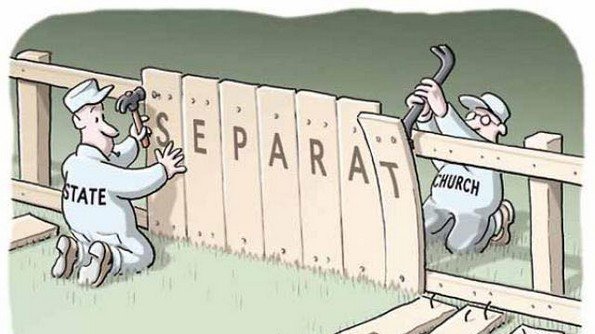
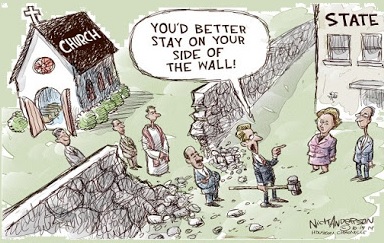 The Board of Education in Champaign, Illinois, allowed a local religious organization consisting of clergy and other volunteers to come into their public schools and teach religion classes during the school day. The organization, calling itself the Champaign Council on Religious Education, offered Protestant, Catholic, or Jewish options. The classes were “voluntary,” and any expenses were paid for by the Council, not the school district or parents.
The Board of Education in Champaign, Illinois, allowed a local religious organization consisting of clergy and other volunteers to come into their public schools and teach religion classes during the school day. The organization, calling itself the Champaign Council on Religious Education, offered Protestant, Catholic, or Jewish options. The classes were “voluntary,” and any expenses were paid for by the Council, not the school district or parents.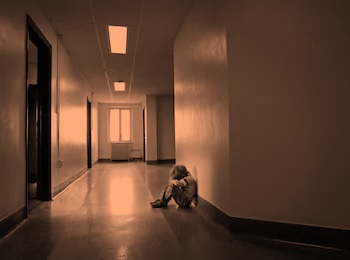 McCollum’s case reached the Supreme Court in 1947, the same year Everson v. Board of Education was decided. In Everson, the Court determined that state assistance to parents whose children rode public busses to school was fine, even though that assistance included families utilizing parochial schools. Everson was the first case of its kind to reach the Court and involved difficult questions about what the “wall of separation” meant in practice when applied to state and local government via the 14th Amendment. Plus, it hadn’t been decided at the time McCollum first began pursuing her case in the courts. It’s unlikely she or anyone else involved had even heard of it yet.
McCollum’s case reached the Supreme Court in 1947, the same year Everson v. Board of Education was decided. In Everson, the Court determined that state assistance to parents whose children rode public busses to school was fine, even though that assistance included families utilizing parochial schools. Everson was the first case of its kind to reach the Court and involved difficult questions about what the “wall of separation” meant in practice when applied to state and local government via the 14th Amendment. Plus, it hadn’t been decided at the time McCollum first began pursuing her case in the courts. It’s unlikely she or anyone else involved had even heard of it yet.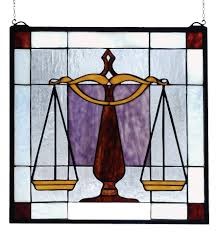 When McCollum’s case reached the Supreme Court, a supportive amicus curiae (“friend of the court”) brief was filed by none other than the Baptist Joint Committee for Religious Liberty. This group was in some ways the intellectual and spiritual descendants of those whacky Danbury Baptists who a century-and-a-half before had written to President Thomas Jefferson about the need for protection from the State. Jefferson’s response coined the phrase “a wall of separation,” which quickly became canon in interpreting the two church-state clauses of the First Amendment.
When McCollum’s case reached the Supreme Court, a supportive amicus curiae (“friend of the court”) brief was filed by none other than the Baptist Joint Committee for Religious Liberty. This group was in some ways the intellectual and spiritual descendants of those whacky Danbury Baptists who a century-and-a-half before had written to President Thomas Jefferson about the need for protection from the State. Jefferson’s response coined the phrase “a wall of separation,” which quickly became canon in interpreting the two church-state clauses of the First Amendment.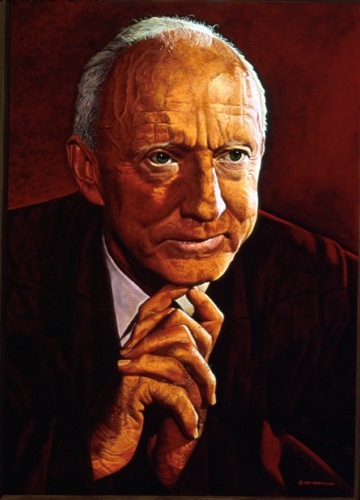 The Majority Opinion
The Majority Opinion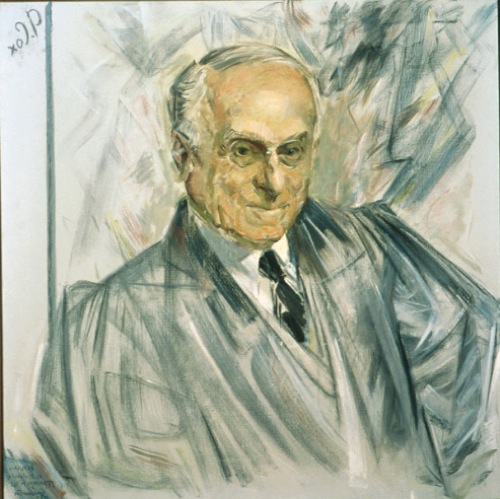 Frankfurter’s Concurrence
Frankfurter’s Concurrence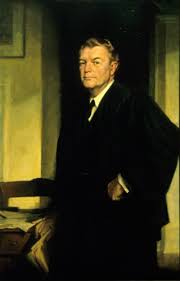 Jackson’s Concurrence
Jackson’s Concurrence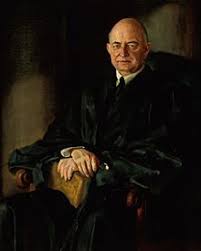 Reed’s Dissent
Reed’s Dissent